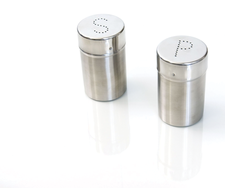Hashes, salt, and pepper
Salt and Pepper

© Lead Image © topnat, 123RF.com
Cryptographic hash functions help you protect your passwords, but hashing is only secure if properly understood.
Hash functions are an integral part of computer science – and not just with databases and checksums. Hashes were originally intended for storing data efficiently in memory, but the hashing concept has evolved into a technique for securely storing passwords.
Linux writes the password hash values to the /etc/shadow file, which you can only read if you have root privileges. But even if you have the root password, you'll find it difficult to learn any useful access information. The function used to store the password hash values in etc/shadow is a one-way function, which means you can't work backward from the hash value to create the original password – at least in theory. As you'll learn in this article, attackers still sometimes manage to crack these supposedly irreversible hash functions.
What is a Hash?
The idea of a hash is simple: An address is calculated from the value that is to be stored. Suppose, for example, you need to store the four user names Fritz, Laempel, Max, and Moritz. A hash function would calculate a numeric value from these names.
[...]
Buy this article as PDF
(incl. VAT)
Buy Linux Magazine
Subscribe to our Linux Newsletters
Find Linux and Open Source Jobs
Subscribe to our ADMIN Newsletters
Support Our Work
Linux Magazine content is made possible with support from readers like you. Please consider contributing when you’ve found an article to be beneficial.

News
-
Debian Unleashes Debian Libre Live
Debian Libre Live keeps your machine free of proprietary software.
-
Valve Announces Pending Release of Steam Machine
Shout it to the heavens: Steam Machine, powered by Linux, is set to arrive in 2026.
-
Happy Birthday, ADMIN Magazine!
ADMIN is celebrating its 15th anniversary with issue #90.
-
Another Linux Malware Discovered
Russian hackers use Hyper-V to hide malware within Linux virtual machines.
-
TUXEDO Computers Announces a New InfinityBook
TUXEDO Computers is at it again with a new InfinityBook that will meet your professional and gaming needs.
-
SUSE Dives into the Agentic AI Pool
SUSE becomes the first open source company to adopt agentic AI with SUSE Enterprise Linux 16.
-
Linux Now Runs Most Windows Games
The latest data shows that nearly 90 percent of Windows games can be played on Linux.
-
Fedora 43 Has Finally Landed
The Fedora Linux developers have announced their latest release, Fedora 43.
-
KDE Unleashes Plasma 6.5
The Plasma 6.5 desktop environment is now available with new features, improvements, and the usual bug fixes.
-
Xubuntu Site Possibly Hacked
It appears that the Xubuntu site was hacked and briefly served up a malicious ZIP file from its download page.

